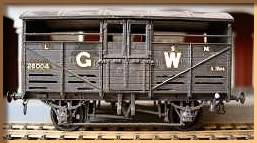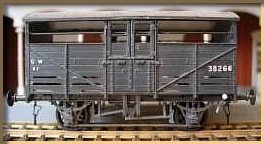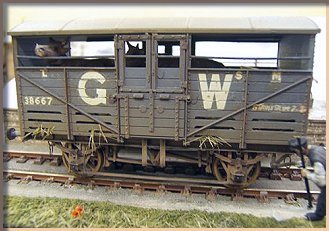| Section Page | Previous Page | Next Page |
Cooper-Craft cattle wagonsby Graeme PettitBackground
The kits are a good beginner's cattle van. In my own models I have replaced the guard wire in the body with Gibson wire, and fitted brass buffers. The tiebars between the axleboxes are prone to breaking, so these could also be replaced. You might also consider adding pipework, improving the tiebars, and fitting the internal partitions. Add some stock, stood on a representation of straw, weather them, and they will look a million times better for it!
An important note when modelling the internal partition is that the framing should face away from the area in which the animals would be – this is for the benefit of livestock welfare, and would reduce incidence of harm caused to the livestock by the framing when in transit. Small nuances in the kit as provided date it to the 1920s onward: During the 1920s, the right-hand bottom slot was filled in (see photo) as it was fouling the brake handle. During this same period, three rows of slots in the ends were also filled in. These changes are not incorporated in the kit, but it should simply be to open out the missing slots if required, thereby back-dating the version modelled. Later in life, some of these wagons had the sides blocked in for use as ALE wagons, and a conversion to this type should not be too difficult.
|
| Section Page | Previous Page | Next Page |


